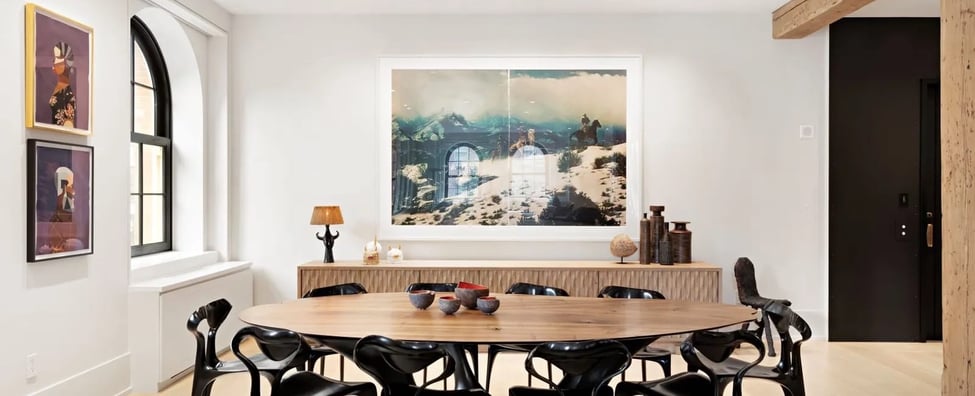Seeking peace, harmony, and tranquillity at home? Perhaps it’s time to embrace the minimalism, artisanal craftsmanship, and traditional features that make Japanese design so inviting. Though Japandi style—a combination of classic Japanese and streamlined Scandinavian aesthetics—is topping trend lists this year, the foundational components of Japanese design are truly timeless. Here are six ways to effortlessly transform a home.

Wabi-Sabi
A principle that informs Japanese design, wabi-sabi stems from the teachings of Zen Buddhism: though tricky to translate, it generally celebrates the beauty of imperfection, values minimalism over clutter, and encourages the cherishing of objects with a past or personal history. This means highlighting furniture or artwork at home that has sentimental value, even if flawed. Wabi-sabi also relies on a connection to nature and emphasizes the use of materials such as wood, bamboo, and stone, as well as a natural colour palette—think browns, greys, and greens—to set a calming mood.

Fine Craftsmanship
It’s no surprise that fine craftsmanship and attention to detail is important in the wabi-sabi tradition, as objects are meant to stand the test of time. In a Japanese-style home, furniture is crafted from high-quality wood and other natural materials to satisfy both form and function. In keeping with a minimalist aesthetic, invest in well-crafted pieces that are thoughtfully designed to include storage solutions so no space is wasted, and no clutter is apparent.

Low-Profile Furniture
Furniture has a noticeably lower profile in Japanese homes. Tables are designed to accommodate diners seated on cushions or tatami mats, while couches, chairs, and beds are lower to the ground to create the illusion of more space and offer unique viewpoints to the outdoors. In the bedroom, select a short bed frame or platform and choose bedding in natural materials such as linen for a tranquil yet elegant sleeping environment.

Open Space
In addition to low-profile furniture, resist the urge to fill rooms with bulky pieces and knickknacks in order to achieve an airy atmosphere throughout the house. Japanese homes often consist of open floor plans to provide ample ease of movement, in addition to allowing natural light to filter through the rooms with minimal obstruction.

A Freestanding Bathtub
A freestanding soaking tub, or ofuro, is vital to a Japanese-style home. Rooted in ancient tradition, Japanese culture embraces bathing each night for its soothing and healing properties, which include boosting circulation and alleviating pain, while the calming sounds of water in the home provides a meditative ambience. To follow the Japanese practice of bathing, the room should also include a shower for cleansing oneself before the ritual of soaking.

Panels and Sliding Doors
Rather than using swinging doors that take up space when opened, try sliding doors as partitions throughout the home as a nod to Japanese design. In Japanese architecture, these lightweight screens, called shoji, slide easily along rails mounted on the wall and consist of a wooden frame with translucent washi paper, which allows soft natural light to spread throughout the house.
Japanese design has many attractive qualities, both aesthetic and holistic. In our often-hectic lives, it’s a relief to retreat to a peaceful, unencumbered space. By focusing on simplicity, blending traditional architectural details, and following the ethos, it’s possible to achieve the distinct elegance of Japanese-style design and enjoy elevated living every day.
Learn more about the Colours of Japandi Design.

